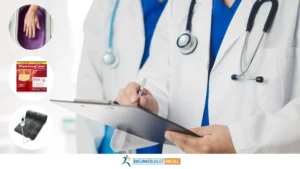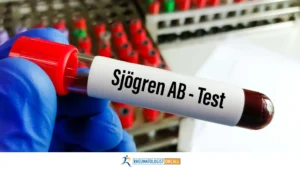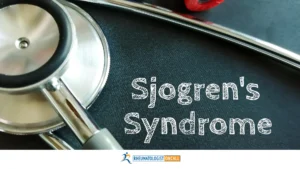SHARE
Did you know that ankylosing spondylitis is a condition frequently missed or misdiagnosed? Unfortunately, many young patients that develop ankylosing spondylitis get diagnosed late. Why? Most patients think their back pain results from an injury or previous sports accidents. However, it is essential to recognize the most frequent signs and symptoms of ankylosing spondylitis and get to a rheumatologist soon after these symptoms develop.
In this article, I will discuss:
- What Is Ankylosing Spondylitis?
- Who Develops Ankylosing Spondylitis?
- What Are The Most Common Seven Signs of Ankylosing Spondylitis?
What is Ankylosing Spondylitis?
Ankylosing spondylitis, or AS, is an inflammatory disease. It often affects the spine, the peripheral joints, and the tendons but may also affect other organs as well, such as the eyes, heart, or kidneys. It is most commonly associated with the gradual fusion of vertebrae in the spine, which occurs gradually over time. This disease reduces spine flexibility and, gradually, the development of a hunched posture.
Who develops Ankylosing Spondylitis?
Most patients that develop AS are young, under the age of 45. Their symptoms start gradually over the course of weeks or months. Some patients are diagnosed late, after the age of 50, and specific signs on their X-rays or MRI can suggest that this disease was present for many years.
What are the most common seven signs of Ankylosing Spondylitis?
There are seven common signs or symptoms seen in patients with AS. In this video, I am explaining the seven most common signs of ankylosing spondylitis.
Back Pain
Pain in the lower back, sacroiliac joints (joints in the pelvis or lower back), and neck are the most common symptoms in patients with AS. Patients will especially experience back pain in the morning, accompanied by stiffness lasting more than 1 hour. The pain worsens with rest, so the best pain reliever is exercise. If left untreated, inflammation will eventually lead to ankylosing: the fixation of the spine via the fusion of vertebrae. This will lead to decreased spine mobility, decreased chest expansion, and inability to turn the head (when the neck is affected).
Hip pain
Hip pain is present in approximately 25% of patients with AS. It can be present in the groin, thighs, and sometimes knees. Other peripheral joints may also be affected, such as the ankles, shoulders, sternoclavicular joints (located in the chest area), and even the temporomandibular joint (TMJ, located in the cheekbone). About half of the patients with AS experience change in their TMJs, as seen via their CT scans. Unfortunately, patients suffering from hip pain have a worse prognosis.
Buttock Pain
About 40% of patients with AS present with alternating pain from one side to another of their buttocks. Sometimes the pain is present on only one side. Sausage digits -In medical terms, we use the term “dactylitis” instead of sausage digits. Some patients can present with diffuse swelling of one finger or one toe caused by the tendons’ inflammation. Dactylitis is hard to treat and requires a longer period of time to improve.
Tendonitis
Inflammation of the tendons is very common in patients with AS. The most frequent tendons affected are the tendons of the elbows, Achilles tendons and plantar fascia. Some patients can complain about swelling or redness over those tendons.
Eye inflammation
One eye or both eyes can be affected in patients with AS. About 35% of patients get inflammation in their eyes. Patients can present with eye problems before the pain in the back starts. Most often, they will complain of eye pain, they will not tolerate light or they will have blurry vision. The treatment has to be done immediately as it could lead to vision loss.
Bowel disease
About ⅔ of patients with AS have inflammation in their gut. Also, patients with inflammatory bowel diseases like Crohn’s or Ulcerative Colitis can develop a form of AS. This can lead to abdominal pain, bloating, and diarrhea. If those symptoms are persistent, you need a colonoscopy to be evaluated further.
Navigating the medical system these days can be very challenging. Your medical journey will be easier if you have the proper medical support, education, and a true advocate. Rheumatologist OnCall is a telemedicine company that offers support, diagnostic, and the most advanced therapeutic options for your disease affordably and transparently when you need it the most. No waiting time for months and no need to travel for tens or hundreds of miles. You can have a medical appointment from the comfort of your home.
If you are concerned about ankylosing spondylitis or another disease of your back or joints, please consult a rheumatologist that will be able to evaluate you further. If you want to learn more about this disease, like what is HLA -B27, how to diagnose ankylosing spondylitis or how to treat this disease, you can see more movies on my Youtube channel.
Contributors to this article
Diana Girnita MD, PhD and Ana Girnita.














